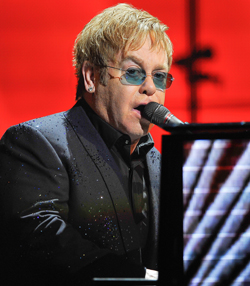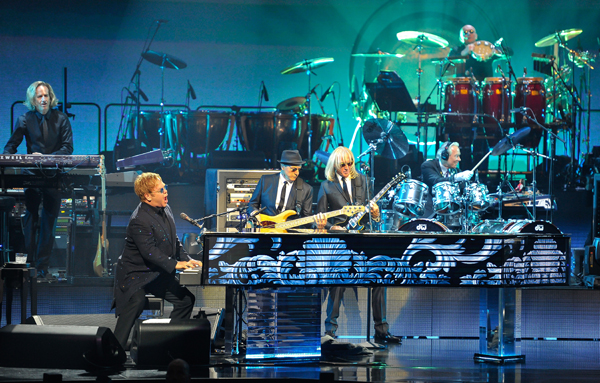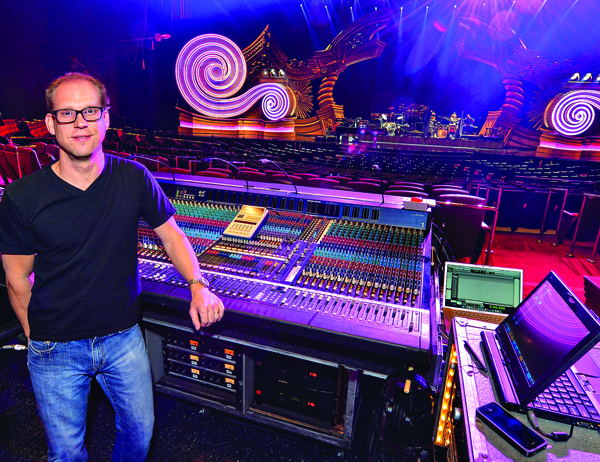Elton John’s Million Dollar Piano is exactly that: A singularly stunning instrument that successfully marries technology and art, and cost just that much to create.
As the name of the legendary performer’s latest headlining act to take up residence at The Colosseum in Caesars Palace, The Million Dollar Piano runs two full hours, expanding beyond the core band heard during The Red Piano – his previous Caesars show – with a pair of cellists that give added verve to the early hits, four backing vocalists including Rose Stone of Sly & The Family Stone pedigree, and percussion avatar Ray Cooper, who has accompanied John on countless occasions for decades running.
Having established its own longstanding presence within Sir Elton’s orbit over the years, Clair Global came to The Colosseum stage for Million Dollar to manage audio orchestrations, with company veteran Matt Herr taking charge at front-of-house and independent engineer Alan Richardson given the keys to monitorworld.
Utilizing a Meyer Sound house PA including left/right hangs equipped with eight M3D cabinets, a pair of arrays using three MSL-4 enclosures and a CQ-1 at the bottom, and twin MICA arrays hung 11 deep in the center, the show is further reinforced with eight MILO 120s covering additional seating, two M’elodie arrays serving as side fills, and a brace of MM-4 miniature front fill loudspeakers mounted on the stage lip.
Left on a relatively loose leash to define what’s heard in the house, Herr concedes that “Elton is old school, there’s no getting around that. He loves to feel the PA, the tightness of the low-end, his wedges are loud as hell. He feeds on all that. He never tells me what it should sound like, he just tells me to turn it up.”
Deserving Of Analog
Guided by the tenets of solid musicianship and dedication to a common dynamic, John and his band are a collaborative entity that puts playing first, foremost, and above all.
Eschewing even the casual notion of using a click track, the group is as free-flowing as one of Sir Elton’s pant legs as it flaps in the tempest of sonically-displaced air coming from his wedges.
The sum product of musicians of this caliber is known in many cases to cry out for the good old warmth of analog, and in this instance Herr heeded that call without any reservations. “That’s the way I’ve always heard this music in my head,” he admits. “In my estimation it just deserves an analog sound.”
So it comes as no surprise when a pair of Yamaha PM5000 consoles are discovered at the house mix position. The main board, a 52-channel model, is supplemented by a 28-channel incarnation of the desk kept to one side at a 90-degree angle.
Outfitted with a dozen stereo channels used for John’s MIDI’d piano as well as effects returns and band member Kim Bullard’s keyboard rig, the big 5K is complemented by its baby brother, which is used solely to capture the myriad stage inputs arriving from Ray Cooper’s sprawling percussion section.
Housing tympani, xylophone, marimba, tubular bells, chimes, roto-toms, congas, vibraphone, enough toys to satisfy the child musician in a dozen adults, and much more, Cooper’s world leaves a sizable footprint within the 125 feet of horizontal space that the stage opens up with onto the audience.
All of the channels on the smaller desk are sent to a stereo out, then subbed into the 5K, where they can be controlled via a single fader and flown into a VCA. Herr then uses the big desk’s mute groups to mute Cooper’s input according to what he’s playing or not playing.

















